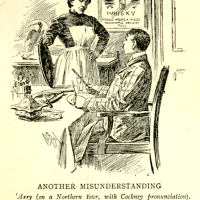 I am truly pleased to be offering a course at Signum University this coming Spring. Running from the beginning of May through the end of July, I am teaching on “Mythologies of Love and Sex.” These are the great myths at the foundation of our culture, the moments where stories of love, sex, marriage, fidelity, and devotion have intersected with the hinges of history. It will be a semester of great reading and transformational ideas. Consider joining us this Spring at Signum!
I am truly pleased to be offering a course at Signum University this coming Spring. Running from the beginning of May through the end of July, I am teaching on “Mythologies of Love and Sex.” These are the great myths at the foundation of our culture, the moments where stories of love, sex, marriage, fidelity, and devotion have intersected with the hinges of history. It will be a semester of great reading and transformational ideas. Consider joining us this Spring at Signum!
Click here for more information.
About Signum University
Signum University believes education should be accessible, dynamic, and affordable. Signum is committed to establishing a completely virtual campus that will cultivate fruitful intellectual exchange between students and teachers, prolific vocational growth for our staff, and a vibrant academic community among our students.
Signum University and Mythgard Institute offer a unique digital campus environment in which students all over the world can engage throughout the course. Each class encourages rigorous academic conversation through multiple points of instruction and dialogue. Classes are available as part of the MA program, or as an inexpensive audit.
- The Signum Classroom provides a convenient interface for live, direct interaction with instructors
- A Class Forum provides a place for students and instructors to hold in-depth conversations about class-related topics
- Discussion Sections offer a moderated setting where M.A. students can talk with each other on a weekly basis
- Lecturer and preceptor Office Hours allow further conference opportunities to ask questions, clarify ideas, and present paper topics
Mythologies of Love and Sex (Summer 2016)
Taught by Brenton Dickieson, with Dr. Sara Brown and Liam Daley as preceptors.
This course explores some of the great mythologies of love that provide a background to today’s culture. Sketched out along the twin paths of C.S. Lewis’ The Four Loves and a chronological development of the idea of romantic love, we explore foundational stories of love, sex, fidelity and betrayal, romance, loss, marriage, and divine and devotional love.
This treatment of love and sex has six movements. In the prologue we ask questions about the conversations of sex and love today, we begin in the civilizational nursery by looking at some of the ideas of love in ancient Mediterranean cultures. As we move into the first chapter, we look at the emergence of Greek and Jewish understanding of love, and the Christian idea of agape, or unconditional love.
In the second chapter, we will see the development—and in some cases a recovery—of the myth of romantic love in Medieval and Renaissance Europe, including themes of devotional, courtly, forbidden, and erotic loves, as well as the forms of storytelling that blended them all. Once love stories have shed their allegorical undertones, Shakespeare is an accessible starting point to discuss the place of romantic love in culture. Shakespeare is in this way the inventor of the modern romantic tradition, though his work suggests an inversion of that tradition. While Goethe captures romantic love in all its poignancy, we see Jane Austen’s inversive mind expand the theme, and turn to the four loves with a powerful cultural treatment in Pride & Prejudice.
In chapter three we turn to familial loves. Perhaps no more rapid change in relationships has come in the family loves, particularly those between parents and children. We will read pieces that suggest that the reassertion of this parental love makes for new problems as romantic, religious, and vocational love sit in uncomfortable tension with that earliest of all loves. Problematizing parental love, then, serves as an opportunity to return to the messages and stories of love in culture today.
Chapter four’s consideration of friendship love leaves us in a difficult situation. Though popular culture is beset with friends on facebook and television, the deep traditions of friendship are largely lost to us. So we turn to some children’s literature to discuss this almost forgotten love.
As an epilogue to the class, we ask some questions about love and culture today. Are we really in a renewed romanticism? What is love in a digital age? What happens when love fails—or when the mythologies of love fail? Which is the most important of the loves? We will close by returning to an ancient theme of “calling,” meant to open questions as to where the reader sits in the world.
Course Schedule
Mythologies of Love and Sex will meet on Mondays and Wednesdays at 4:00 – 5:30 pm Eastern Time.
Prologue: Who Did Write the Book of Love?
Week 1: “Art is a Lie Which Makes us Realize the Truth”
- Read:Tolkien, “Mythopoeia,” Genesis 1 – 3, Lewis, The Four Loves
- Watch:The Princess Bride
- Recommended:Tolkien, “On Fairy-Stories,” Lady in the Water, Magorium’s Wonder Emporium, 1980s Brat Pack films
Week 2: Introduction to Love, Religion, and Mythology
- Read:Song of Solomon; Lewis, The Four Loves
- Recommended:The Epic of Gilgamesh; Homer, The Iliad, The Odyssey; the Cupid and Psyche cycle in Books 4 – 6 of The Golden Ass
Chapter One: The Emergence of Agape
Week 3: Greek and Christian Inventions of Love
- Read:Plato, “The Symposium”; 1 John, Bible Handout, Patristics Handout
- Recommended:Harry Potter
Chapter Two: The Establishment (and Inversion?) of Eros
Week 4: Form, Flesh and Fidelity: The Art of Courtly Love
- Read: Selections from The Letters of Abelard & Héloïse; Patristic and Medieval Writings handout; Selections from Lewis, The Allegory of Love
- Recommended: Malory, Le Morte d’Arthur; Andreas Capellanus, The Art of Courtly Love
Week 5: Shakespeare: The Invention (and Inversion?) of Romantic Love
- Read:Shakespeare, Romeo and Juliet, Sonnets handout
- Recommended:Baz Luhrmann’s Romeo + Juliet
Week 6: Goethe and the Romantic Tradition
- Read:The Sorrows of Young Werther
- Recommended:Orlando
Week 7: Jane Austen and the Change of the Heart
- Read:Austen, Pride & Prejudice
- Recommended:Richardson, Pamela; Morris, The Well at the World’s End
Chapter Three: The Problem of Storge
Week 8: The Forbidden Love of Asher Lev
- Read:Potok, My Name is Asher Lev
Week 9: When Love is No Better than Hate
- Read:Lewis, Till We Have Faces
- Recommended:Lewis, The Great Divorce
Chapter Four: Can We Recover Philia?
Week 11: Where did Friendship Go?
- Read:Paterson, Bridge to Terabithia
- Recommended:King, The Body, Stand by Me
Epilogue: Love and the Cosmos
Week 12: Plastic Bodies and Broken Hearts: Myths of Love Today
- Read:Coelho, The Alchemist
- Watch:Lars and the Real Girl, Easy A
- Recommended:Lewis, A Grief Observed
Texts
Most of these books are widely available in local libraries or in inexpensive editions. Any edition of the books is fine. Translation in parentheses; it is okay to choose a different translation. In some cases, handouts will be provided in class, as noted below.
We’ve linked to free online resources where possible. Where no legally free version is available, links point to the Amazon page where a copy of the text may be purchased. Purchases made through these links help Signum University at no additional cost to you.
Required Texts
- J.R.R. Tolkien, “Mythopoeia” (1931, widely available online)
- The Bible(handout provided)
- C.S. Lewis, The Four Loves(1960)
- Plato, The Symposium(4 th c. BCE, Christopher Gill)
- Selections from C.S. Lewis, The Allegory of Love(1936)
- Selections from Patristic and Medieval Writings(handout provided)
- Selections from The Letters of Abelard & Héloïse(12th c., William Levitan)
- Shakespeare, Romeo & Juliet(1597)
- Selections from Shakespeare’s Sonnets(1609, provided online)
- Johann Wolfgang von Goethe, The Sorrows of Young Werther(1774, Michael Hulse)
- Jane Austen, Pride & Prejudice(1813)
- C.S. Lewis, Till We Have Faces(1956)
- Chaim Potok, My Name is Asher Lev(1972)
- Katherine Paterson, Bridge to Terabithia(1977)
- Paulo Coelho, The Alchemist(1988)
Required Films
- The Princess Bride(1987)
- Baz Luhrmann’s Romeo + Juliet(1996)
- Bridge to Terabithia(2007)
- Stand by Me(1986)
- Lars and the Real Girl(2007)
- Easy A(2010)
Suggested Works
- Selections from Andreas Capellanus, The Art of Courtly Love in The Broadview Anthology of British Literature: Volume 1: The Medieval Period(Ed. Joseph Black et al, 2 nd ed., 2009)
- Virginia Woolf, Orlando(1927)
- J.R.R. Tolkien, “On Fairy-Stories” (also in Tree and Leaf, The Tolkien Reader, and Essays Presented to Charles Williams, ed. C.S. Lewis)
- J.R.R. Tolkien, The Lord of the Rings(1955-56)
- C.S. Lewis, The Great Divorce(1945)
- C.S. Lewis, A Grief Observed(1961)
- Stephen King, The Body(1982) (also in Different Seasons)
Note: Course schedules, texts and other details are subject to change. Upon enrolling, students should refer to the syllabus and Moodle course page for the most current information.






















Reblogged this on The Oddest Inkling and commented:
Here is a class offered by Signum University this summer, taught by “Pilgrim in Narnia” blogger Brenton Dickieson.
A Lewis-like boldness seems needed to give this – which should be rewarding all round!
Good wishes for it, and joy of it!
It could be boldness bordering on stupidity! I don’t know. But I like walks where we romp across various fields, and that’s what this course is.
Very interesting, Just reminds me of the Woody Allen “joke” from one of his movies. He says ” I must go, because I am teaching a class on masturbation, and if I’m not there they will start without me “
Ha! I haven’t heard that one.
Yes, I’ve gotten some “Dr. Love” comments recently. There are some things I would be afraid to claim to be an expert on…. This is definitely one of them.
Never the less ! You can proceed at your own speed, and will probably find this course very interesting for the first 15 minutes or so ! and then become not so interesting, and wonder why you ever took this class to begin with ?
Um, I’m not sure what to do with this?
If you are bored after 15 mins, I am definitely not the right teacher. Signum will let you shift to another class, or give the tuition back.
Pingback: 2016: My Year in Books: The Infographic | A Pilgrim in Narnia